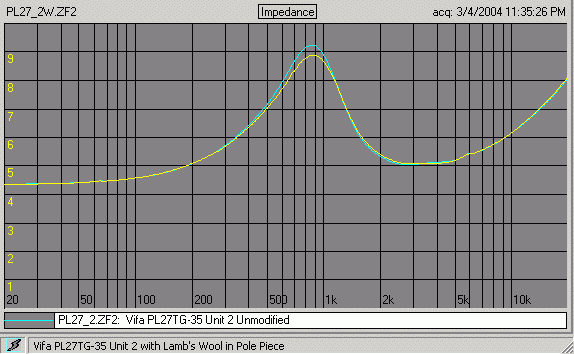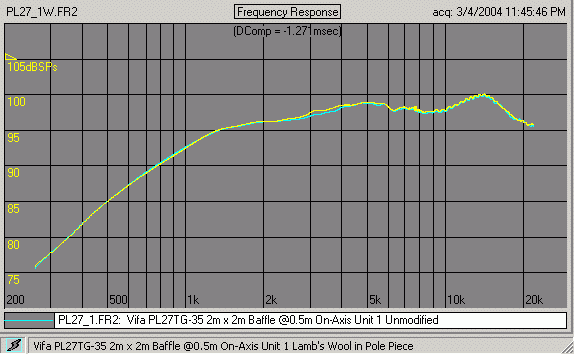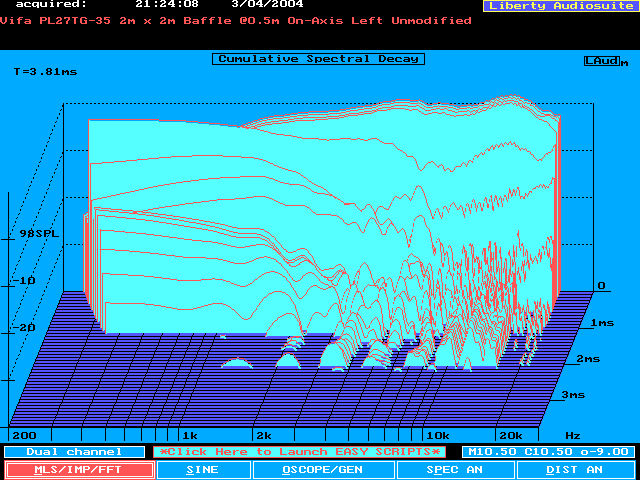I received a pair of PL27TG-35 tweeters to test (thanks to Doug Packard). It is constructed similarly to the D27TG-45, but has higher sensitivity and a slightly different pole-piece. The results of my modifications to these drivers were very surprising. What first appeared to me to be a small change (vs. the D27TG-45 I had years ago) seems to be more significant. Not having modified the D27 I can't be sure that this difference alone is responsible, but it definitely results in a differing response to my modification.
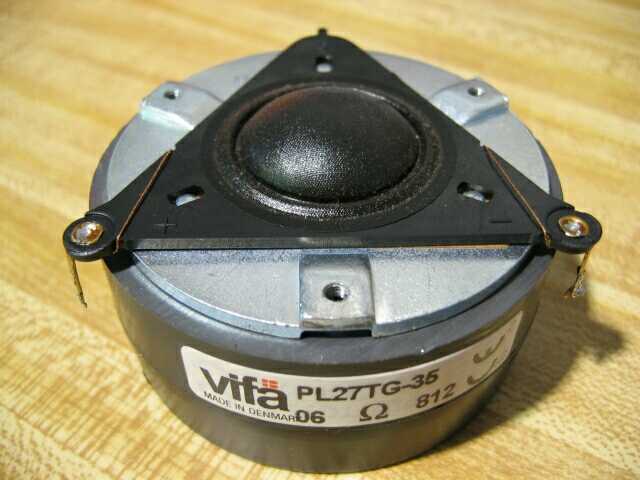
Vifa PL27TG-35 with Face Plate Removed
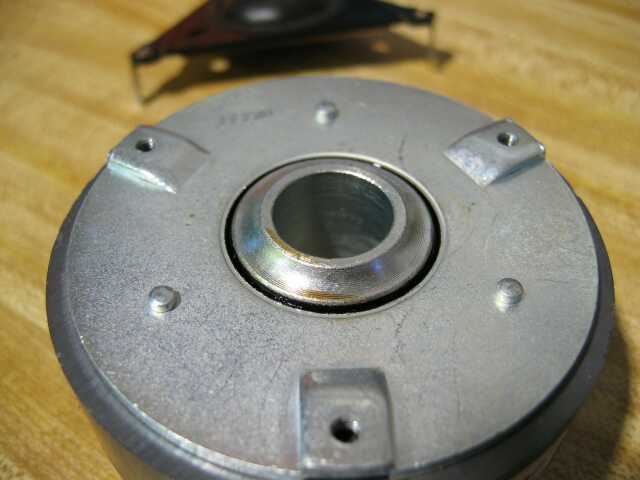
Vifa PL27TG-35 Motor

Vifa PL27TG-35 Pole-Piece Extension

Vifa PL27TG-35 with Lamb's Wool in Pole-Piece
The first graphs show the impedance curves, before and after the modification. Adding wool into the pole piece vent usually lowers the Fs a bit, but for these tweeters it was increased. The Q is slightly lower and there is some smoothing of an obvious resonance in the 4khz area.
The SPL graphs show the same drivers, with and without wool in the pole piece vent. The improvement made by adding the wool is much lower in these drivers than for any others I've modified. This was surprising. The only significant change was a leveling from 3-4KHz Unit 1 and a slight leveling from 4-6KHz for Unit 2.
The CSD (waterfall) plots show that the modification makes a slight improvement in the decay. The slight resonances from about 3-5K seem to be better damped. Curiously, there's a slight increase in a resonance at 2KHz. This could be an artifact of measuring again after removal, modification and re-mounting of the driver. Beyond that the changes are too small to be significant.
Now for the step responses. I show these because the step response is a good indicator of the speed and settling of the driver. The first one shows the original response for Unit 1 prior to the modification. The second one shows the response after the modification. There is very little difference in them. In fact, given the resolution of my test system I don't think that any conclusions can be drawn from these.
My conclusion for the PL27TG-35 is that there is little room for improvement by tweaking. It's a surprisingly good result (non-linearities notwithstanding). It's a very high sensitivity driver that is a good buy for the money. Felt will improve it, but not nearly as much as it has for other drivers I've tested.









